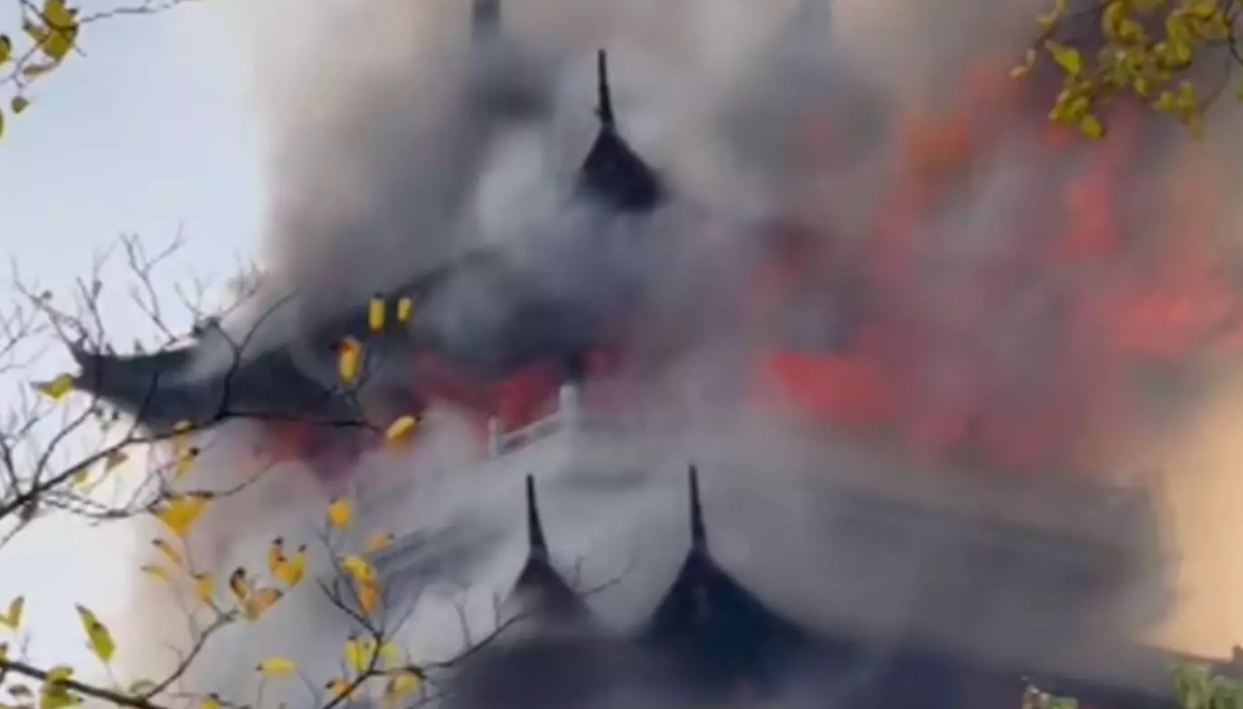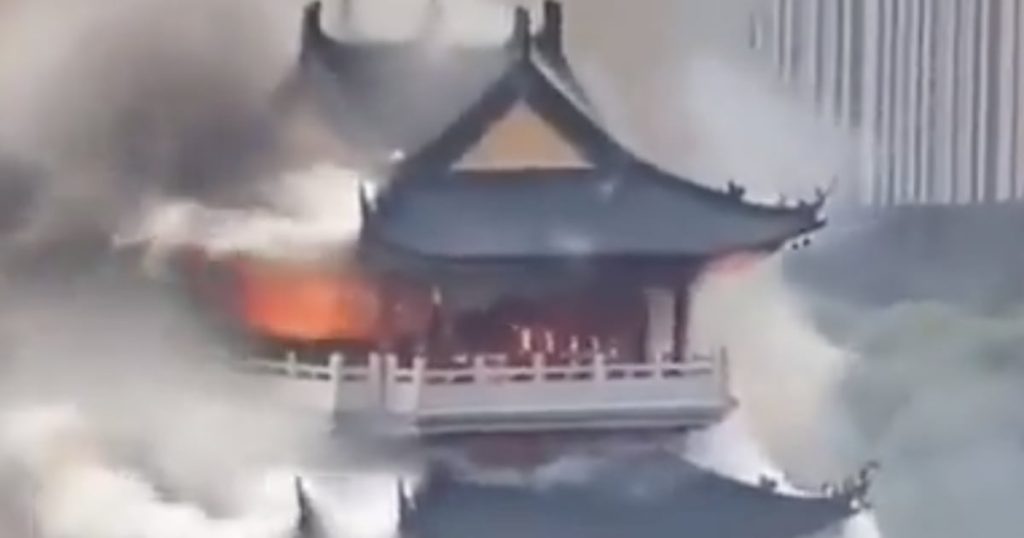A dramatic fire broke out on November 12, 2025, at a temple pavilion located in Jiangsu Province, China. The building, known as the Wenchang Pavilion, is part of the Yongqing Temple complex in Zhangjiagang. Eyewitnesses filmed thick smoke and flames engulfing the three-storey wooden structure, creating a striking scene that quickly spread across social media. Local fire crews responded promptly and managed to extinguish the blaze by early afternoon. Fortunately, no one was injured in the incident, and nearby forested land was not affected.
What Caused the Fire?
Preliminary investigation suggests the fire may have been triggered by a tourist’s improper use of incense and candles.
According to officials, the visitor’s handling of lit items was careless, sparking concern over fire safety at historic and religious sites. Authorities have made it clear that, despite the dramatic visuals, the building did not contain any ancient relics.
In fact, the pavilion was built relatively recently, in 2009, as part of a modern reconstruction of the older temple grounds.

The Temple’s Significance
While the Wenchang Pavilion itself is modern, it sits within the larger Yongqing Temple site, which has roots stretching back approximately 1,500 years.
The original temple played a notable role in the region’s spiritual history during the Liang Dynasty. Because the pavilion is a relatively new addition, the fire did not destroy any ancient architecture or artifacts. Still, the structure held symbolic value for the local community, and its loss has sparked broader concern about preserving even modern religious architecture.
Response from Authorities and the Community
Immediately after the fire was under control, officials launched a full investigation into what went wrong.
They emphasized the need for better fire safety measures at tourist sites, particularly where visitors may not fully understand how to use candles or incense safely. Fire officials have pledged to increase oversight of temples and pagodas across the region to minimize the risk that similar incidents could happen again. In addition, restoration plans are already being discussed. Experts and local cultural organizations aim to rebuild the pavilion, preserving its architectural style and importance to the community.
Lessons in Respect and Safety
This accident has drawn attention to how seemingly small acts of devotion—like lighting incense—can carry danger when not handled carefully. It serves as a reminder that visitors to religious or historic sites need to follow guidelines and treat sacred places with respect. For many, the event is a call for a broader dialogue: how can sites that welcome tourists maintain both cultural preservation and visitor safety? Local leaders and cultural heritage organizations are now under pressure to balance openness with protection.

Looking Ahead
Moving forward, the community hopes to restore the damaged pavilion while also reinforcing fire prevention practices. The goal is not just to rebuild what was lost, but to make sure future visitors understand the risks and responsibilities that come with sacred spaces. This incident may mark a turning point — one where more temples reconsider how they manage visitor behavior around fire and how they educate guests about safety, all while honoring spiritual traditions.

















